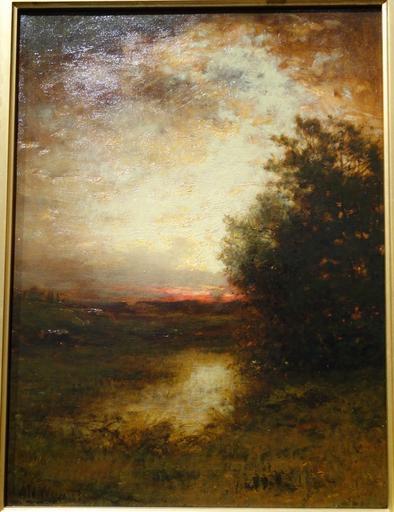Introduction
In an age dominated by visual communication, photography has emerged as one of the most powerful forms of self-expression and storytelling. Whether you’re capturing fleeting moments or crafting intricate narratives, your unique style in photography can transform mundane scenes into extraordinary art. This article delves deep into the artistic choices involved in shaping your photographic identity. From aesthetic photography to self-portrait photography, we will explore various styles, techniques, and concepts that contribute to developing a distinctive photographic voice.
Artistic Choices: Crafting Your Unique Photography Style
Creating a photographic style is akin to composing a symphony; each element must work harmoniously to resonate with the viewer’s emotions. To achieve this, one must consider various factors including subject matter, composition, color palette, and even the emotion you wish to evoke.
- Subject Matter: What stories do you want to tell? Are they about nature, people, or abstract concepts? Composition: How will you frame your subjects? Will you follow traditional rules or break them for artistic effect? Color Palette: What colors resonate with you? Vibrant hues can provoke energy while muted tones may bring tranquility.
The journey toward defining your unique style can be both exhilarating and daunting. It requires exploration and experimentation, so don’t hesitate to step out of your comfort zone.
Exploring Aesthetic Photography
Understanding Aesthetic Qualities in Art
Aesthetic photography revolves around creating visually pleasing images that evoke feelings or thoughts. It's not just about what the eye sees; it’s about how it makes one feel.
Color Theory: Understanding how colors interact can elevate your photographs from simple captures to stunning art pieces. Warm colors often convey warmth and energy while cool colors bring calmness. Texture and Patterns: Incorporating textures or patterns can lead to more engaging compositions. Light and Shadow: The interplay between light and shadow can add depth to your images.Capturing Moments in Photography
Every photograph tells a story; thus, learning how to effectively capture those moments is essential.
- Timing is Everything: Often, it's about being at the right place at the right time. Anticipation: Train yourself to anticipate movements or developments within a scene. Emotional Engagement: Try to capture not just an image but an emotion; this elevates the photograph beyond mere aesthetics.
Self-Portrait Photography: A Journey of Self-Expression
Identity in Art through Self-Portraits
Self-portrait photography allows individuals to explore their identities intimately. It serves as a canvas for self-expression in art where one can depict themselves authentically or through imaginative contexts.
Personal Narrative: Use self-portraits as a form of storytelling about who you are inside. Experimentation with Styles: Don’t hesitate to try various styles—be it minimalist or abstract portraits—to see what resonates with you. Faceless Portraits: These can be incredibly powerful when exploring themes of anonymity and identity.Emotional Reflection in Art
Self-portraiture also offers an opportunity for emotional exploration:
- How do certain settings make you feel? Which expressions resonate most deeply with your inner self?
By posing these questions during shoots, you'll enrich both your understanding of yourself and your audience's experience when viewing your work.
Contemplative Photography: Seeing Beyond the Surface
What is Contemplative Photography?
Contemplative photography encourages one to slow down and observe their surroundings more deeply—inviting mindfulness into the creative process.
Mindful Observation: Focus on what stands out before reaching for the camera. Intentionality in Framing: Consider how each element within the frame contributes meaningfully to the image. Emotional Engagement: Capturing emotional resonance helps create a contemplative space for viewers as well.Everyday Spaces in Art
Contemplative photographers often find beauty in everyday scenes:
- Look for unique perspectives on mundane subjects. Use natural light creatively—observe its transformations throughout different times of day.
Portrait Styles: Diverse Approaches to Human Representation
1. Traditional Portraits
Traditional portraiture focuses on capturing subjects' likenesses with meticulous attention to detail—often used in studio settings against neutral backgrounds.
2. Abstract Portraits
Abstract portraits challenge conventional representations by focusing more on shapes, colors, and emotions rather than realistic portrayals of subjects.
3. Colorful Portraits
Vibrant color palettes breathe life into portraits:
Choose bold color schemes that reflect personality traits or moods. Experiment with lighting techniques that enhance specific hues.4. Fine Art Photography as Personal Expression
Fine art photography transcends mere documentation; it becomes an expression of personal vision:
Conceptual Themes: Develop projects around specific ideas that intrigue you. Display Options: Consider large canvases versus smaller prints based on desired impact.5 . Linocut Printing Techniques vs Woodblock Printing Techniques
Both linocut and woodblock printing offer unique ways of creating artistic images by carving into surfaces before applying ink:

| Technique | Description | Pros | Cons | |---------------------|---------------------------------|---------------------------|------------------------------| | Linocut Printing | Uses linoleum blocks | Easy carving | Can wear down quickly | | Woodblock Printing | Uses carved wood | Tradition-rich | More difficult to carve |
6 . Interior Design Meets Artistic Expression
Integrating art into home decor https://www.oskuleinonenphotography.com/Contemplative-Photography-And-Empowering-Images transforms living spaces into reflections of personal taste:
Home Aesthetics
Decorative Art Prints: Select prints that harmonize with existing decor themes (modern vs eclectic). Custom Wall Art: Tailored pieces provide unique focal points within any room layout.Wall Art Photography
Photographs displayed as wall art serve dual purposes—they beautify spaces while conveying stories behind those captured moments:
Gallery Wall Inspiration: Curate collections using varying frame styles for added character. Framed Photography: Invest in high-quality frames that complement artwork without overwhelming viewers’ attention.7 . Creative Display Techniques for Home Decor
Art should inspire dialogue! Here are some display strategies worth considering:
Group Similar Pieces Together Use Floating Shelves Mix Genres Thoughtfully8 . Nature-Inspired Art
Drawing inspiration from nature helps cultivate calming atmospheres ideal for relaxation spaces like bedrooms or reading nooks:
1) Landscape Photography 2) Floral Arrangements
Frequently Asked Questions (FAQs)
What is aesthetic photography?
Aesthetic photography emphasizes creating visually appealing images that evoke emotions or provoke thoughts through composition, color theory, light/shadow interplay, among other artistic choices.
How can I develop my unique photography style?
Start by exploring various genres such as self-portraiture or abstract portraits while considering elements like subject matter & composition techniques until you find what resonates best with you personally!
What role does color play in portrait styles?
Color influences mood significantly! For example, warm tones might evoke feelings of happiness whereas cooler shades may elicit calmness—choosing colors aligned with intended emotional responses enhances overall impact!
Can I mix different artistic techniques together?
Absolutely! Merging different approaches adds depth & richness – feel free experimenting until arriving at something distinctly yours!
What are faceless portraits?
Faceless portraits focus primarily either on parts (like hands) instead showing faces outright allowing interpretation regarding identity representation without direct imagery involved!
Why is contemplative photography important?
It fosters mindful observation encouraging deeper connections between photographer-subject-environment helping cultivate appreciation towards otherwise overlooked details around us every day!

Conclusion
Crafting your unique photography style involves making conscious artistic choices across various dimensions—from selecting subject matter & framing techniques through exploring diverse display options which ultimately culminate into cohesive visual storytelling experiences reflecting individuality! Embrace experimentation; allow yourself freedom explore new ideas without constraints—it’s all part making this journey worthwhile! So grab that camera again—and let creativity unfold before lens today!